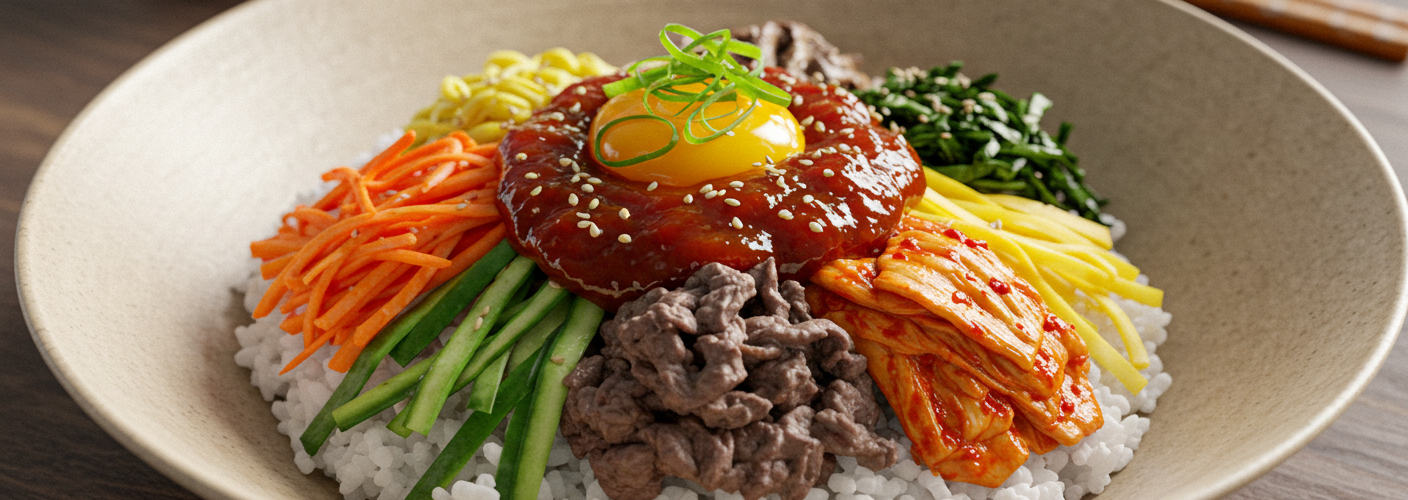Bibimbap is more than just a dish; it’s a vibrant, visually captivating culinary experience that combines a variety of ingredients to offer a delightful balance of flavors and textures. Originating from Korea, this traditional meal has gained popularity worldwide, cherished for its colorful presentation and the health benefits of its components. At its core, bibimbap is warm white rice topped with an array of vegetables, meat, and savory sauces that create a delightful medley of tastes in every bite.
The Harmony of Ingredients
The hallmark of bibimbap lies in its diverse assortment of ingredients. Each bibimbap dish tells a story through its colorful array of toppings, often referred to as “namul” (seasonally prepared vegetables). Common namul includes seasoned spinach, sautéed bean sprouts, and marinated radishes, all of which are carefully chosen for their unique flavors and nutritional benefits.
In addition to vegetables, many versions of bibimbap feature a protein source, typically beef or chicken, which is marinated to enhance its flavor. For those seeking plant-based options, tofu or a medley of mushrooms can be substituted, providing a satisfying alternative that does not compromise on taste.
The crowning glory of bibimbap often comes in the form of gochujang, a fermented chili paste that adds a spicy, slightly sweet kick. Alternatively, some may prefer to use soy sauce or doenjang (fermented soybean paste) to balance the flavors. This versatility allows people to customize their bibimbap according to their taste preferences and dietary needs.
The Preparation Process
Preparing bibimbap is as much an art as it is a culinary science. The rice should be perfectly cooked – not too sticky, yet fluffy enough to absorb the flavors of the toppings. Each ingredient is typically prepared separately; vegetables can be blanched, sautéed, or pickled, depending on the desired flavor profile. The meat, marinated and cooked to perfection, adds a richness that rounds out the dish.
When assembling the bibimbap, it’s traditional to arrange the ingredients in a visually appealing manner atop the bed of rice. The vibrant colors of the vegetables against the white rice create a stunning display that is almost too beautiful to eat. Finally, a fried egg is often placed on top, with the yolk adding a luscious creaminess when mixed into the other ingredients.
The Dining Experience
Bibimbap is meant to be mixed before eating, allowing each bite to combine the distinct flavors and textures. The process of mixing the ingredients, often done at the table, encourages engagement and delight as diners watch the dish transform into a vibrant amalgamation of color and taste.
Aside from its remarkable flavor and texture combinations, bibimbap serves as a nutritious meal, packed with protein, vitamins, and healthy fats. It’s a wonderful way to enjoy a balanced diet while indulging in a delightful culinary experience.
In Conclusion
Bibimbap is not just a meal—it embodies the spirit of Korean cuisine, symbolizing harmony through a balance of flavors and textures. Whether enjoyed at a local restaurant or made at home, this dish encapsulates warmth, comfort, and the joy of shared meals. Dive into bibimbap, and let your taste buds embark on an unforgettable journey!




Add comment